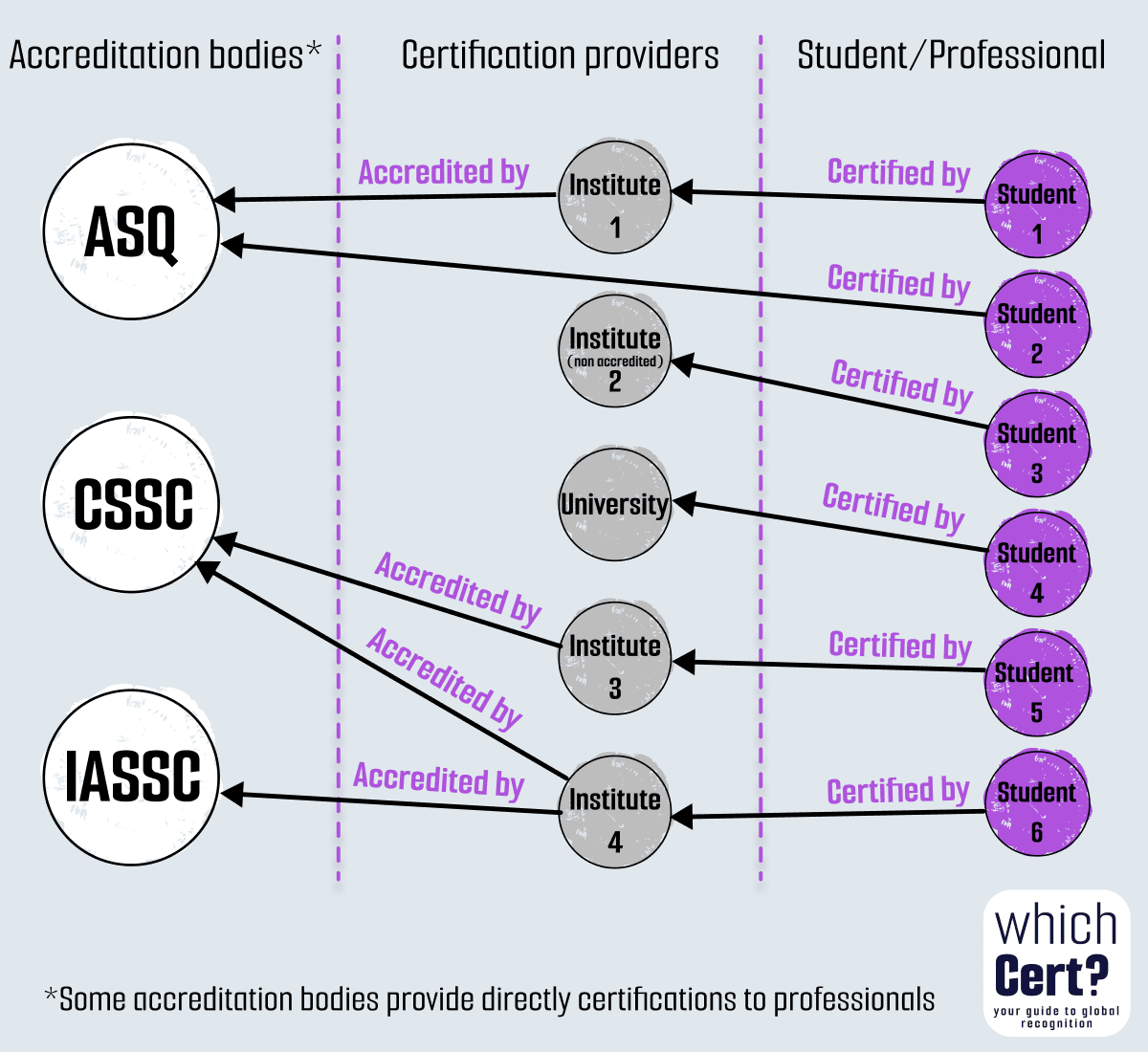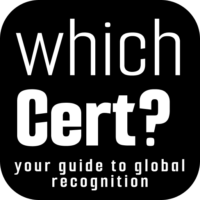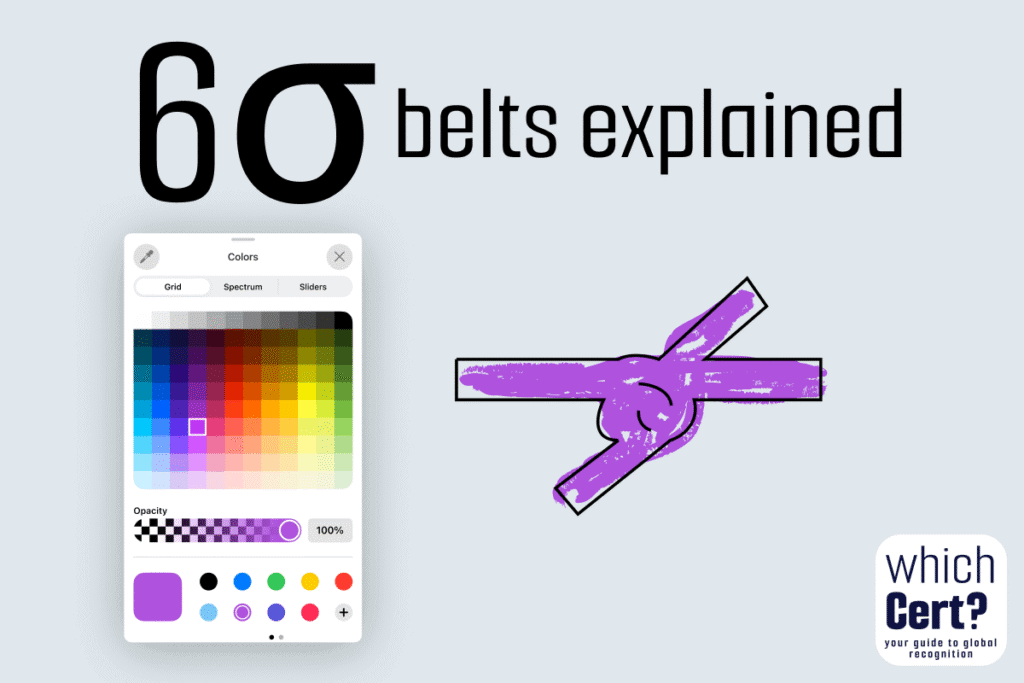Getting Lean Six Sigma Certification is not a universal path. Before finding my article, you may have come across suggestions such as starting with studying the “Body of Knowledge,” or another course provider recommending a one-week online training followed by an online exam, which can be confusing. In this article, I’ll answer how to get Six Sigma Certification? from the White Belt (an entry-level option, sometimes with a free accredited certification) through the Yellow Belt, Green Belt, Black Belt, and finally the Master Black Belt. You’ll see how each belt builds on the previous one and what knowledge is expected at every stage. And finally, I’ll answer whether it really makes sense to begin with a White Belt course or if you should start directly with the Yellow Belt level, and finally, I will list Lean Six Sigma certification requirements according to each accreditation body.
How to Get Lean Six Sigma Certification Summary
| Belt Level | Providers | Requirements |
|---|---|---|
| White Belt | CSSC | CSSC: pass free online exam; no prerequisites |
| Yellow Belt | ASQ; IASSC; CSSC; MOOCs | ASQ: pass exam; IASSC: closed-book exam; CSSC: open-book exam; MOOCs: training + exam + project |
| Green Belt | ASQ; IASSC; CSSC; MOOCs | ASQ: exam + 3 yrs experience or 1 project; IASSC: exam; CSSC: exam; MOOCs: training + exam + project |
| Black Belt | ASQ; IASSC; CSSC; MOOCs | ASQ: exam + 3 yrs experience + 1–2 projects; IASSC: exam; CSSC: exam; MOOCs: training + exam + project |
| Master Black Belt | ASQ; CSSC; MOOCs | ASQ: portfolio review + advanced exam; CSSC: exam + project; MOOCs: training + exam + mentorship; IASSC: not available |
Introduction
Unlike ISO certifications (although Six Sigma is standardized by ISO through ISO 18404 and ISO 13053-1), Six Sigma has no main accreditation body (e.g. ASQ Six Sigma) to govern it. Some training providers believe that it is not even necessary to have accreditation to provide Six Sigma certification. This means certification providers can operate without formal accreditation requirements. However, many reputable providers choose to seek accreditation from recognized organizations to demonstrate credibility and quality standards.
Furthermore, available Six Sigma accreditation is not governed by a single accreditation body. This has a major impact on the market because each reputable Lean Six Sigma certification follows its own framework, exam structure, and level of recognition depending on the accrediting body (which can be a little confusing if you’re just starting out, I know!). Also, some universities deliver the certification, as if the subject weren’t complex enough!
That’s why so many learners end up asking: Which Six Sigma certification is best? (Good question!). The requirements and industry recognition can differ significantly across providers. Choosing the right provider means first selecting the accreditor, then the certification provider, depending on what your industry requires.
Six Sigma Accreditation Bodies (ASQ, IASSC, CSSC)
Although there is no consensus like ISO’s main global body for accreditation, which is the International Accreditation Forum (IAF), Six Sigma has three principal accreditation bodies:
- ASQ (American Society for Quality)
- IASSC (International Assoc. for Six Sigma Certification)
- CSSC (Council for Six Sigma Certification)
Otherwise, in the introduction, I mentioned that some Six Sigma certification providers believe that accreditation is not required. There is no universal governing body for Lean Six Sigma training or its curriculum, so organizations and training providers create training programs and curricula based on their own needs and guiding principles. They consider their expertise, client portfolios, and reviews as alternatives to formal accreditation.

As a quality engineer, I suggest that learners focus on three principal criteria to choose which Six Sigma certification is best for their curriculum:
- Which accreditation body is recognized in your industry (or targeted industry): If your industry recognizes a non-accredited provider, why would you spend sometimes 10 times more money on an accredited course?
- And the course program: some programs are comprehensive, while others are very basic. If you don’t choose the right course, you might miss an opportunity to learn an “optional” topic that could impact your career (like the KANO Model).
- And finaly the cost!
Six Sigma White Belt Certification
Although most high-level certifications require payment, introductory free Six Sigma training is common for the Lean 6 Sigma White Belt.
While the White Belt certification is not accredited by the main accreditation bodies, the Council for Six Sigma Certification (CSSC) offers Six Sigma white belt free certification making it a great way to start your Six Sigma training journey.
Lean Six Sigma Certification Requirements by each Accreditation Body (Yellow, Green, Black, and Master Black Belt)
The key difference lies in the barriers to entry—the requirements a candidate must meet to be awarded the belt. Below you’ll find how to get Lean Six Sigma certification with the most recognized Six Sigma Certifications from providers endorsed by each accreditation body (difference between IASSS vs ASQ Six Sigma) and with non accredited providers.
Six Sigma Yellow Belt Requirements
- Certification providers accredited by ASQ (American Society for Quality): Pass rigorous exam. No experience or education requirements.
- Certification providers accredited by IASSC (International Assoc. for Six Sigma Certification): Pass rigorous knowledge-based Yellow Belt exam (closed-book/proctored). No prerequisite.
- Certification providers accredited by CSSC (Council for Six Sigma Certification): Pass exam (often open-book). No prerequisites and no project requirement for initial certification.
- Non Accredited certification provider, such as GLSS (Go Lean Six Sigma) autorized training partner of PMI, gain 2 PDUs (Professional Development Unit that is required to maintain a PMI credential such as the PMP Certification): Completion of free online Yellow Belt training AND final exam (project optional).
- MOOCs (e.g., Villanova, UNC Charlotte): Completion of training course, a comprehensive exam, AND a mandatory practical project (case study or real-world).
- MOOC from Technical University of Munich (TUM) in edX: Complete 3 online courses:
Six Sigma Green Belt Requirements
- Certification providers accredited by ASQ (American Society for Quality): ASQ Six Sigma Green Belt requirements pass rigorous exam AND have 3 years of work experience OR 1 project with signed affidavit.
- Certification providers accredited by IASSC (International Assoc. for Six Sigma Certification): Pass rigorous knowledge-based Green Belt exam (closed-book/proctored). No project prerequisite.
- Certification providers accredited by CSSC (Council for Six Sigma Certification): Pass exam (often open-book). No project requirement for initial certification. (Though they offer Level II/III certs that require projects).
- Non Accredited certification provider, such as GLSS (Go Lean Six Sigma) autorized training partner of PMI, gain 4 PDUs (Professional Development Unit that is required to maintain a PMI credential such as the PMP Certification): Completion of online Green Belt training, comprehensive final exam, AND optional project for certification.
- MOOCs (e.g., Villanova Six sigma green belt): Completion of training course, a comprehensive exam, AND a mandatory practical project (case study or real-world).
- MOOC from Technical University of Munich (TUM) in edX: Prerequisites include completing the three online courses from the Yellow Belt program + Complete:
Six Sigma Black Belt Requirements
- Certification providers accredited by ASQ (American Society for Quality): Pass rigorous exam AND have 3 years of experience AND 1-2 completed projects with signed affidavits.
- Certification providers accredited by IASSC (International Assoc. for Six Sigma Certification): Pass rigorous knowledge-based exam (closed-book/proctored). No project prerequisite.
- Certification providers accredited by CSSC (Council for Six Sigma Certification): Pass exam (often open-book). No project requirement for initial certification. (Though they offer Level II/III certs that require projects).
- Non Accredited certification provider, such as GLSS (Go Lean Six Sigma) autorized training partner of PMI, gain 8 PDUs (Professional Development Unit that is required to maintain a PMI credential such as the PMP Certification): Completion of online Black Belt training, comprehensive final exam, AND optional project for certification.
- MOOCs (e.g., Villanova, UNC Charlotte): Completion of training course, advanced exam, AND a significant real-world project often with coaching/mentorship.
- MOOC from Technical University of Munich (TUM) in edX: Not available.
Six Sigma Master Black Belt (MBB) Requirements
- Certification providers accredited by ASQ (American Society for Quality): Portfolio Review (of experience/coaching) and pass an advanced exam. Prerequisite: Current ASQ Black Belt, AND 5 years experience as a BB/MBB OR completion of 10 BB projects.
- Certification providers accredited by IASSC (International Assoc. for Six Sigma Certification): Not available.
- Certification providers accredited by CSSC (Council for Six Sigma Certification): Exam AND Project required. Requires prior completion of their Black Belt Level III certification (which has project requirements).
- Non Accredited certification provider, such as GLSS (Go Lean Six Sigma): Not available.
- MOOCs (e.g., Villanova, UNC Charlotte): Completion of advanced coursework, pass an exam, AND a focus on coaching/mentoring Black Belts and strategic deployment (the ultimate “project”). Requires an existing Black Belt certification.
- MOOC from Technical University of Munich (TUM) in edX: Not available.
How to Get Six Sigma Certification (4 concise steps)
Step 1: Select the Accreditation Body and Belt Level (ASQ vs IASSC vs CSSC)
Begin by researching which certification body (ASQ, IASSC, or CSSC) is most recognized and valued in your industry. Some sectors may favor one over the others, while others accept all equally. If you’re new to quality engineering and your industry allows flexibility, it’s beneficial to choose a program that offers a comprehensive and well-structured curriculum to build a strong foundation.
Next, determine which belt level (e.g., Yellow, Green, Black) aligns with your career goals and is commonly required in your field. Consider your current experience, the expectations of your role, and the timeline in which you aim to achieve certification.
If you are confused about Six Sigma certification levels, check our article: Six Sigma belt levels explained
Step 2: Choose Your Training Method (Self-Study or Online Training)
Refer to the accreditation body you selected in Step 1 and check if they provide a detailed body of knowledge or study guide. If you’re confident in your ability to learn independently, self-study might be a suitable option. However, if you prefer structured guidance or need help understanding complex concepts, enrolling in an online training course can offer valuable support and better prepare you for the certification exam.
Step 3: Take the Certification Exam
If you’ve completed your training through a center that offers accredited certification, verify that their credentials align with the accreditation body you chose in Step 1. If everything checks out, you can proceed with the exam. If you studied independently or your training provider isn’t accredited, you’ll need to locate an authorized certification provider and register for the exam, and complete any required project work, if applicable.
Step 4: Maintain Your Certification (If Required)
Some certifications require periodic renewal or continuing education to remain valid. Be sure to review the maintenance requirements set by your chosen accreditation body. This may include earning professional development units (PDUs), retaking exams, or completing refresher courses. Staying current ensures your certification continues to support your career growth.


